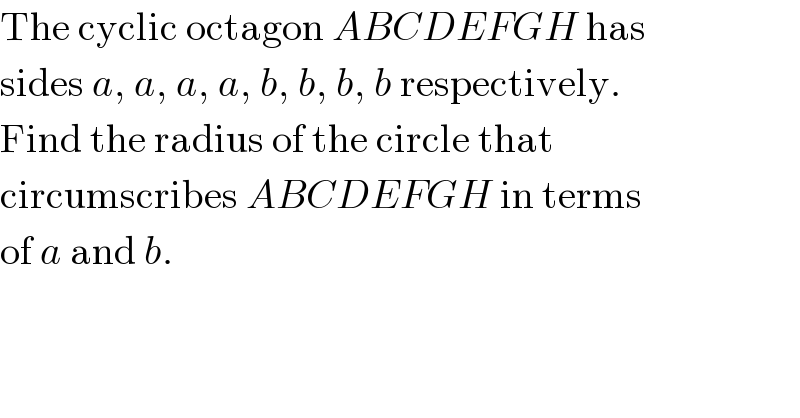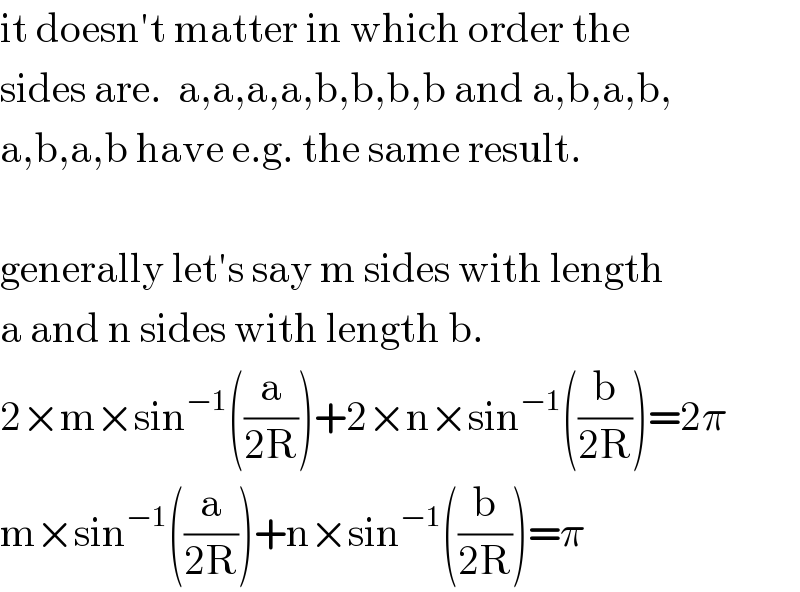
Question and Answers Forum
Question Number 21574 by Tinkutara last updated on 27/Sep/17

Answered by mrW1 last updated on 05/Oct/17
![8×[sin^(−1) ((a/(2R)))+sin^(−1) ((b/(2R)))]=2π let α=sin^(−1) ((a/(2R))) let β=sin^(−1) ((b/(2R))) ⇒8(α+β)=2π ⇒α+β=(π/4) α=(π/4)−β sin α=((√2)/2)(cos β−sin β) (√2)sin α+sin β=cos β (√2)×(a/(2R))+(b/(2R))=cos β (1/(2R))((√2)a+b)=cos β ((2a^2 +2(√2)ab+b^2 )/(4R^2 ))=cos^2 β=1−sin^2 β=1−(b^2 /(4R^2 )) ((2a^2 +2(√2)ab+2b^2 )/(4R^2 ))=1 ((a^2 +(√2)ab+b^2 )/(2R^2 ))=1 ⇒R=(√((a^2 +b^2 +(√2)ab)/2))](Q21577.png)
Commented by mrW1 last updated on 28/Sep/17

Commented by Tinkutara last updated on 06/Oct/17

Commented by mrW1 last updated on 05/Oct/17

